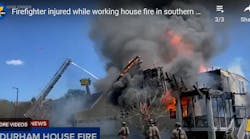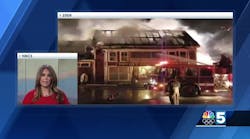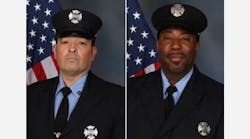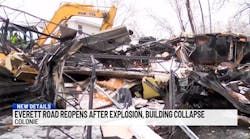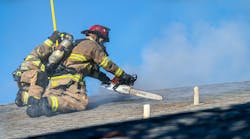SAN DIEGO, Calif. -- Are firefighters losing their edge and aggressiveness in the name of safety? That's the question Worcester (Mass.) Deputy Fire Chief John Sullivan posed at Firehouse World on Tuesday.
Sullivan believes this to be the case, but he is not advocating throwing caution to the wind. Rather, he's calling for “rational aggressiveness,” which he discussed in his class called, "Leading the Call for Rational Aggressiveness" at the San Diego Convention Center.
Coverage of Firehouse World 2011
Sullivan said all firefighters are "a little to mostly crazy."
"How many of us hear, 'I can't believe you do what you do. You run into burning buildings when others are headed the other way,'" Sullivan asked. "If you don't think fire is fun, a little bit, then you're probably in the wrong profession. It's a rush, an adrenaline rush and when someone takes away a little bit of that fun, in the name of safety, it pisses us off."
Sullivan, who experienced the tragedy of the Worcester Cold Storage warehouse fire in 1999 where six firefighters were lost, said that in the months following that, commanders were obviously gun shy and would pull firefighters out at every hint of danger. He understood the kneejerk reaction, but didn't like it. He figured the firefighters had jobs to do and were getting paid to save lives and property and it was time to let them do the work.
Not long ago, a Colorado colleague of Sullivan's called him looking for a class on aggressive firefighting and he couldn't think of any. That sparked him to develop a course on that topic with the tempering of safety.
"I want the class to say it's OK to be aggressive, but that really cuts against the grain of being safe," Sullivan said. Hence, the term rational aggressiveness was woven into his class.
Safety, Sullivan said, is a necessary part of the fire service and he welcomes it. There's no need for anyone to put themselves unnecessarily in harm's way. There's no reason for anyone to shun SCBAs, or thermal imaging cameras, or safety tactics and equipment that keep firefighters safe, he said.
They are tools that allow firefighters to be aggressive and safe at the same time, he said.
"In what we are doing, there's a natural aggressiveness," Sullivan said. "You go out and by the T-Shirts, and get tattoos that say 'I am a warrior and I'm going to do battle with the Red Devil.'"
On the flip side, safety is now also part of the fire service.
"It's part of the culture and it's here to stay," Sullivan said. "At the same time we must not lose our aggressive edge."
Sullivan was clear that there should be no unnecessary risk-taking, like running into an unoccupied, well-involved McDonald's Restaurant for an aggressive interior attack.
"Why would you do that?" he quizzed. "There's nothing to gain. They're disposable buildings as well."
Many buildings, including new residential homes, are framed with lightweight construction which significantly reduces burn and collapse times. Additionally, much of the contents of new homes are petroleum based products, up to as much as 80 percent. Firefighters need to realize there is far less burn time to collapse than decades ago when buildings were stick built.
"You have to acknowledge the playing field has changed," Sullivan said. "You can't keep doing things the same way you always have, just because that's the way you've always done it. ...And we wonder why we go in the front door and our firefighters go through the floor."
To be confident in aggressiveness, Sullivan said knowing the enemy is the best way to maintain that competitive edge. Pre-planning buildings will help firefighters know what they are getting into before they are faced with making decisions on whether to launch offensive or defensive attacks. And good pre-planning should include going inside the structure and walking around the back as well, including at night which will make a huge difference on how things appear and what can be seen and what cannot.
"If we know what we're getting into we make much better decisions," Sullivan said. "...Take your training to the next level to keep that competitive edge."
